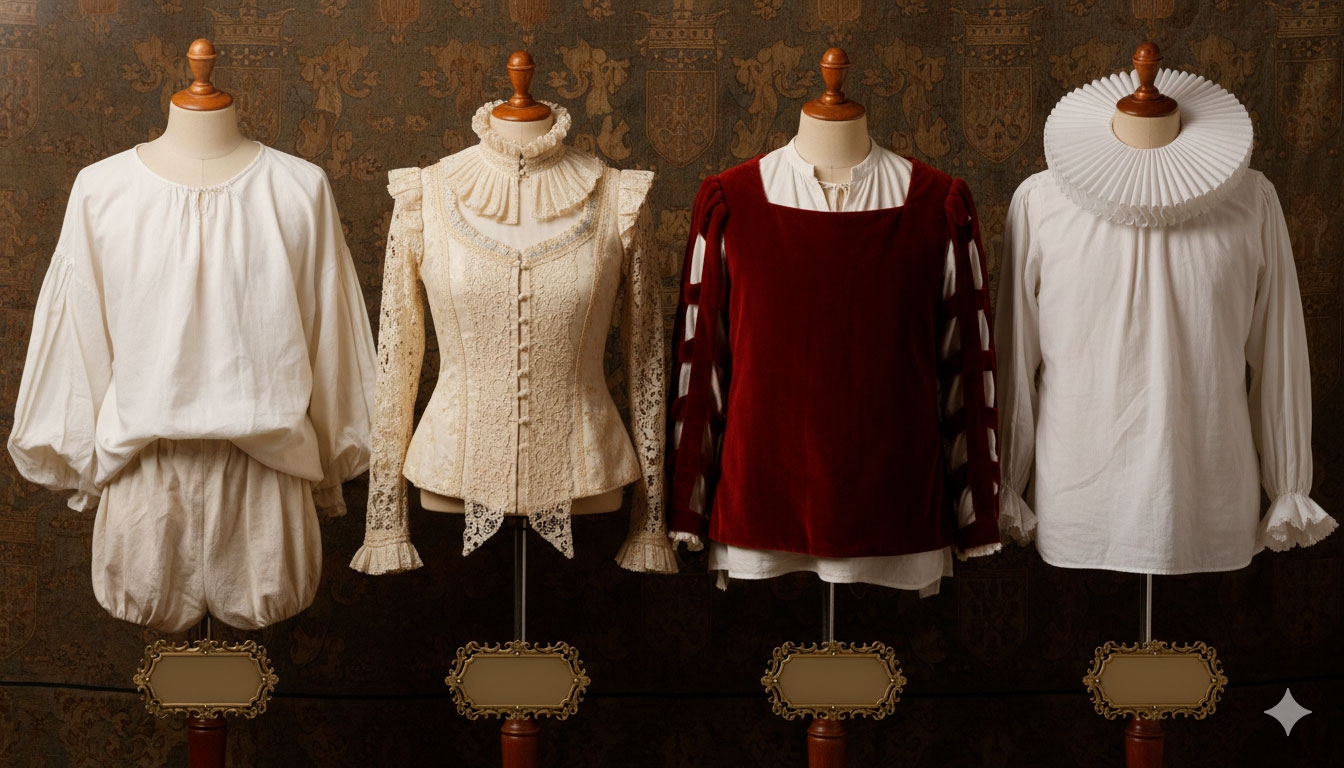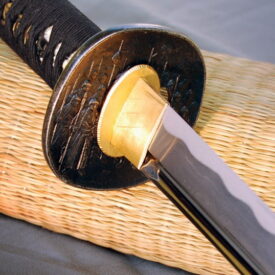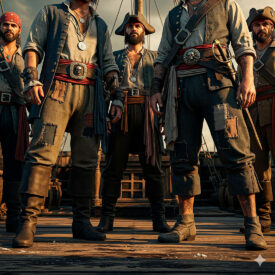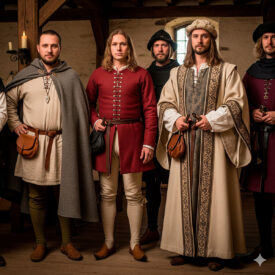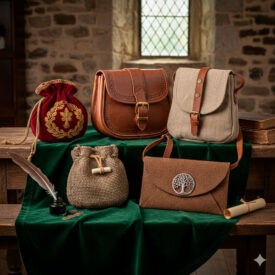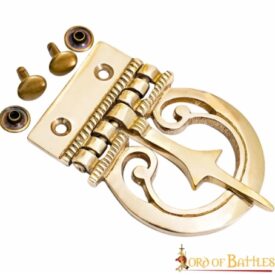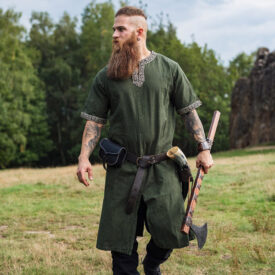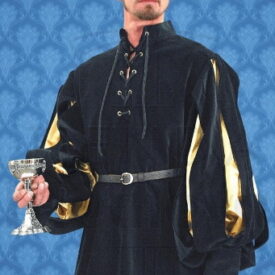Have you ever wondered how Renaissance fashion laid the foundation for today’s elegance? In a time of profound cultural and artistic transformations, a discreet yet essential garment emerged to become the canvas where the wealth, status, and personal taste of every noble and commoner were evident: the Renaissance shirt. Beyond its practical function, this garment evolved from simple underwear into a manifestation of identity, with cuts, materials, and adornments that whispered tales of power and refinement. Prepare to discover the secrets of these fascinating pieces and learn to differentiate the types that marked an era.
The Renaissance Shirt: A Historical Journey Through Time
The history of the Renaissance shirt is a narrative of evolution and distinction. From its humble origins in antiquity to becoming a key piece of 16th-century wardrobe, its journey reveals much about the society of the time. Let’s see how this garment transcended its initial function to acquire a much deeper meaning.
| Era | Event |
|---|---|
| Previous period: origins and Middle Ages | |
| Antiquity | The shirt derives from ancient undergarments: the Egyptian kalasiris (rectangular linen piece with a head opening, preserved in funeral trousseaux), the Roman tunica manicata (added sleeves), and garments such as the Greek kamison and the Roman subcula. |
| Middle Ages (up to 14th century) | The shirt is primarily an undergarment: it protects the skin from rough fabrics and keeps outer garments clean. It lacks buttons and visible ornamentation. |
| 12th century | Shorter shirts are associated with masculinity and longer ones with femininity. |
| Middle Ages: color | White or neutral tones dominate; whiteness is associated with purity and innocence and, in courtly environments, with social refinement. |
| Renaissance (15th – 17th centuries) | |
| 15th century | The diversification of clothing begins, which will lead to the complex tastes of the 16th century; the shirt begins its visibility beyond intimacy. |
| Renaissance (general) | The shirt generalizes its use and is decorated: lace and frills appear at the edges of jackets and bodices. White becomes an emblem of aristocracy, because only elites could keep it impeccable. |
| 16th century (Renaissance boom) | |
| Influences on design | Italian fashion broadens sleeves (allowing the shirt to show at the elbows); Germanic styles adopt “slashes” (tears that reveal the shirt, of Swiss origin); square necklines appear. |
| Stylistic characteristics | The men’s shirt is displayed showing part of the neckline and embroidered sleeves, which are gathered with a lacing. Ornamental elements multiply: embroideries, openwork, and lace. Collars become very striking: ruffs and lechuguillas (curled and starched collars and cuffs) are aristocratic symbols. |
| Female typology | Noble women use the camicia (of Italian origin), made of linen or cotton, long sleeves and closed neck, placed under the corset. |
| Male typology | The Renaissance men’s shirt (Elizabethan underwear, 16th – 17th centuries) is a basic linen piece, knee-length or mid-thigh, with a small high collar, cuffs, and front opening. |
| Specific example | White cotton shirt embroidered in black on cuffs and collar (Elizabethan underwear, 16th-17th centuries). |
| Late 16th – early 17th centuries | |
| Use under the doublet | The shirt is worn over the skin and under the doublet (a fitted jacket with a rigid collar and sleeves that conceal much of the shirt), leaving primarily the cuffs and collar visible. |
| Female fashion and religious factors | Courtly female fashion tends to sobriety and greater enclosure due to the Reformation and Counter-Reformation, although the linen shirt can still protrude from dresses. |
| Decline of ruffs | The fashion for starched collars and cuffs (ruffs) begins to decline in the early 17th century. |
| Later centuries: transition to modernity | |
| Towards the end of the 18th century | After the French Revolution, shirt ornamentation is reduced in favor of cleaner lines (English influence). Aesthetic interest shifts to accessories such as the tie or handkerchief. |
What was a Renaissance shirt and why did it matter?
In the Renaissance, the shirt emerged from medieval anonymity to become an essential and central piece of clothing. It was much more than a simple garment; it was a canvas for social and personal expression. While its primary function was hygiene and protection against harsh outer fabrics, its visibility at the neck and sleeves gave it a new aesthetic role.
These shirts, made of linen or cotton, were generally white or neutral in color, symbolizing purity and cleanliness. Their basic cut was simple, often knee-length or mid-thigh, with small high collars, cuffs, and a front opening. However, what truly distinguished them was the attention to detail and the period’s fashion trends.
Types of Renaissance Shirts: A Reflection of Society
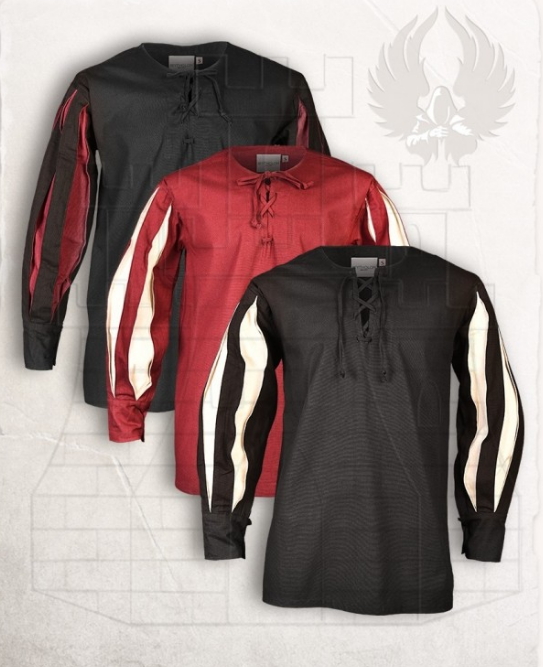 During the Renaissance, the shirt served both practical and social status functions. Garments varied by country, social class, local fashion, and temporal evolution, but some recurring models and characteristics stand out.
During the Renaissance, the shirt served both practical and social status functions. Garments varied by country, social class, local fashion, and temporal evolution, but some recurring models and characteristics stand out.
Distinction by Social Class and Materials
The quality of a Renaissance shirt was a clear indicator of the wearer’s social status.
- Nobility: Preferred shirts of fine white linen or cotton, with embroidery, lace, and elaborate collars. Every detail, from fabric quality to adornments, was a testament to wealth and position.
- Working classes: Wore simpler shirts, made of coarse linen or cotton, with fewer adornments and natural colors. Sumptuary laws of the time even regulated luxury in clothing to maintain clear social divisions.
Main Models and Cuts
The styles of Renaissance shirts evolved, leading to a variety of distinctive designs:
- Basic medieval shirt: The precursor, long-cut, wide-sleeved, and closed-necked, made of linen or cotton, with embroidered finishes on occasion.
- Short Renaissance shirt: More fitted to the chest and with wider sleeves than the medieval one, V-neck or round neck, usually worn under the doublet or bodice. Collars evolved from simple to ruffled (“alechugado”) and then to the ruff (large, independent).
- Landsknecht-style shirt: Common among German mercenaries (Landsknecht), with puffed sleeves, sometimes two-colored, decorated with “slashes” (decorative cuts) that allowed the fabric to show through.
- Pirate or popular shirt: Looser, with drawstrings or slightly frayed, designed for comfort and freedom of movement, usually in linen or coarse cotton.
How to Differentiate Renaissance Shirts
Understanding how Renaissance shirts differed is not only delving into the history of fashion but also into the complexities of society at the time. Here’s how to identify them.
Differentiation by Social Class
The owner’s social category was clearly reflected in the shirt:
- Fabric quality:Fine linen and imported cotton for nobles; coarse linen, rough cotton, or “homemade” for commoners.
- Adornments:Embroidery, ruffles, silks, or velvet on the collar and sleeves for nobility; scarce or no decoration for the lower classes.
- Number and color: Nobles owned multiple shirts of various colors; the less fortunate, one or two, generally in raw tones.
Differentiation by Function and Style
The shirt also adapted to its purpose and the prevailing style:
- Inner shirt: More functional, simple, designed for daily wear or work, remaining less visible under outer clothing.
- Outer/ornamental shirt: Designed for display, with striking collars and sleeves, often embroidered and decorated for special occasions.
- Military shirt (Landsknecht): Voluminous, with a distinctive two-color design and slashed sleeves, created to allow freedom of movement and stand out on the battlefield.
Differentiation by Historical Evolution
Fashion was not static; shirts evolved over time:
- Late Middle Ages/Late 15th century: Long-sleeved, loose-fitting shirt, natural fabric, with little decoration.
- First half of the 16th century: Shorter shirt, puffed sleeves, ruffled collar (“alechugado”), greater presence of colors and adornments.
- Second half of the 16th century: Prominent ruff, even wider sleeves, luxurious fabrics such as silk and velvet among the nobility, marking a clear social division in clothing.
Want to buy a Renaissance shirt?
In our catalog, you will find not only Renaissance shirts but also those from other eras. A journey into the past that we recommend. Visit our collection.
Symbolism and Significance of the Renaissance Shirt
The Renaissance shirt was much more than a simple garment; it was a powerful symbol of status, morality, and even eroticism. Its presence, visible or suggested, was loaded with subtle meanings that made it an object of great cultural importance.
Social Distinction and Luxury
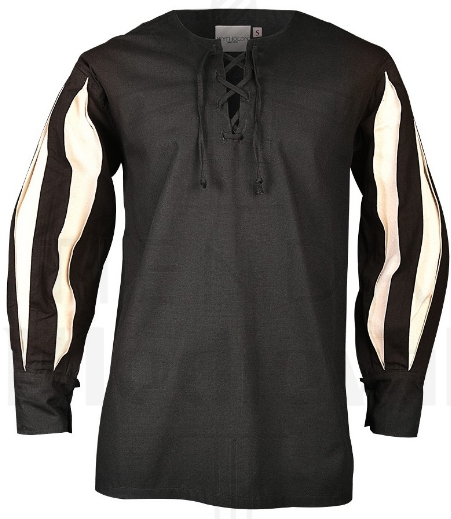 The opulence of a shirt was a clear indicator of the wearer’s social position. Fine materials, elaborate embroidery, and inlaid jewels revealed wealth and lineage prestige. Sumptuary laws, furthermore, strictly dictated who could wear what, seeking to maintain social hierarchies.
The opulence of a shirt was a clear indicator of the wearer’s social position. Fine materials, elaborate embroidery, and inlaid jewels revealed wealth and lineage prestige. Sumptuary laws, furthermore, strictly dictated who could wear what, seeking to maintain social hierarchies.
Symbol of Boundary and Ambiguity
Shirts acted as a “liminal” garment, situated between full dress and nakedness. It could evoke both the helplessness of punishment and the honor of a knightly investiture. Its ambiguity made it ideal for literary narratives, where it could signify both dishonor and the acquisition of a prestigious identity.
Eroticism and Identity
In the Renaissance, the shirt was the last barrier of body protection, making it a symbol of intimacy and seduction. In chivalric literature, it was often associated with the female body and virginity. Ladies could appear in romantic encounters “only the shirt and covered with a cloak,” playing with the appearance of being dressed but revealing their intimacy. It also served to reveal identity or origin, such as a knight’s birthmarks, or, as in Tirant lo Blanch, when the protagonist wears his beloved’s shirt over his armor to publicly proclaim his love.
Clarifying doubts about Renaissance shirts
What were the most common materials used to make Renaissance shirts?
The most common materials used to make Renaissance shirts were primarily linen, cotton, and velvet. Linen was common for being soft, cool, and absorbent, while cotton and velvet were also used, with the latter being more reserved for higher-status garments due to its luxurious appearance and texture. The choice of material depended on social status and the garment’s use. Renaissance shirts were often handmade, with light fabrics that favored the comfort and elegance typical of the era.
How did Renaissance shirts differ from medieval shirts?
Renaissance shirts differed from medieval shirts mainly in that they were shorter, had a V-neck, and wider sleeves, while medieval shirts tended to be longer and with looser cuts. Additionally, Renaissance shirts were part of ensembles where clothing was more fitted to the body, with an emphasis on silhouette, whereas in the Middle Ages, cuts were looser and longer.
What did Renaissance shirts symbolize in terms of social status?
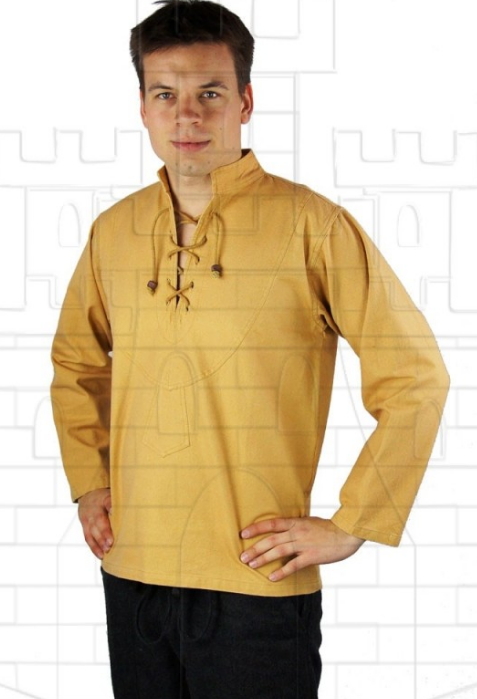 Renaissance shirts symbolized social status, virtue, and self-control. They were a visible sign of social position, reflecting the wearer’s wealth and refinement through the quality of materials, craftsmanship, and adornments. In the Renaissance, meticulous attention to these details turned the shirt into a key element for displaying power, class, and an elevated social identity. Furthermore, its presence in clothing indicated morality and sophistication, making the shirt an important cultural symbol during that period.
Renaissance shirts symbolized social status, virtue, and self-control. They were a visible sign of social position, reflecting the wearer’s wealth and refinement through the quality of materials, craftsmanship, and adornments. In the Renaissance, meticulous attention to these details turned the shirt into a key element for displaying power, class, and an elevated social identity. Furthermore, its presence in clothing indicated morality and sophistication, making the shirt an important cultural symbol during that period.
What traditional tailoring techniques were used for Renaissance shirts?
Renaissance shirts were crafted using traditional techniques that included patterns based on rectangular pieces to maximize fabric use, T-shaped cuts, and the insertion of gussets (triangles or pieces of fabric in the armpits) to improve mobility and durability. Sleeves were long and often made separately for better fit and style. Additionally, embroidery, inlays, and decorative motifs were used, especially on sleeves and necklines, which could be gathered or closed with drawstrings. Cutting techniques (such as longitudinal cuts or slashes) were also used on outer garments to reveal the inner shirt fabric, which was usually white or could be dyed in soft or vibrant colors. The main fabric was fine linen, and specialized tools such as needles, scissors, and looms were used.
What types of collars and sleeves were characteristic of Renaissance shirts?
Renaissance shirts were characterized by the use of simple, straight collars, generally without complex adornments in the early stages, although from the 16th century onwards, more elaborate collars began to emerge, such as the golilla (a rigid and starched collar) and the lechuguilla collar (pleated and ruffled), especially in late Renaissance Spanish fashion.
Regarding sleeves, broad and long sleeves predominated, often gathered or folded, and the “slashed” technique was particularly appreciated: longitudinal cuts in the outer fabric of the sleeve to reveal the inner shirt fabric, which could be embroidered or decorated. In Italian fashion, for instance, it was common to show the shirt through these sleeve cuts, which were an aesthetic and status element. Furthermore, it was common to gather the sleeves at the wrist with a drawstring or ribbon, creating a characteristic puffed effect.
The Renaissance shirt was much more than a simple layer of fabric; it was a transformative element in fashion and society. From its basic functionality to its role as a canvas for status and personal expression, this garment offers us a window into the cultural richness of one of history’s most fascinating eras. By observing its cuts, materials, and adornments, we see not just an outfit, but a living reflection of a world where every detail counted and spoke for itself.
